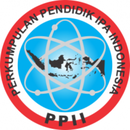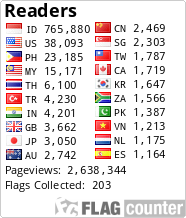Students' Self-Regulated Learning based on Gender and Disciplinary Differences during Online Learning
DOI:
https://doi.org/10.21831/jser.v7i1.58174Keywords:
self-regulated learning, biology, online learningAbstract
Online learning during the pandemic has an impact on the student's learning behavior. It altered the way students learn and manage their time. This research aims to explore students' self-regulated learning in undergraduate students of the department of Biology Education based on gender and disciplinary differences. Research participant was distributed into female and male students. It was also distributed into two different study programs: biology and biology education. 24 questions were administered online to 124 students. The instrument consists of six sub scales, 1) goal setting, 2) environment structuring, 3) task strategies, 4) time management, 5) help seeking, and 6) self-evaluation. The relationship between students' self-regulated learning toward gender and the relationship between students' self-regulated learning toward study program were analyzed using independent sample T test. In addition, correlation analysis was also conducted to find the correlation between students' self-regulated learning and students learning achievement. The results showed that there was no significant relationship between male and female students towards self-regulated learning (p = 0,665) and study programs (p = 0,008). The research results also show that there is a correlation (r = 0,0270) between student achievement and self-regulated learning.Downloads
References
Arcoverde, A. R., Boruchovitch, E., Goes, N. M., & Acee, T. W. (2022). elf-regulated learning of Natural Sciences and Mathematics future teachers: Learning strategies, self-efficacy, and socio-demographic factors. Psicologia: Reflexí£o e Crítica, 35(1), 1-14.
Barnard, L., Lan, W. Y., To, Y. M., Paton, V. O., & Lai, S.-L. (2009). Measuring self-regulation in online and blended learning environments. Internet and Higher Education, 12, 1-6. doi:10.1016/j.iheduc.2008.10.005
Bidjerano, T. (2005). Gender Differences in Self-Regulated Learning. 36th Annual Meeting of the Northeastern Educational Research Association, (pp. 1-8). Kerhonkson, NY.
Boardbent, J., & Poon, W. L. (2015). Self-regulated learning strategies & academic achievement in online higher education learning environments: A systematic review. Internet and Higher Education, 27, 1-13. doi:dx.doi.org/10.1016/j.iheduc.2015.04.007
Carter, R. A., Rice, M., Yang, S., & Jackson, H. A. (2020). Self-regulated learning in online learning environments: strategies for remote learning. Information and Learning Science, 121, 321-329.
Cho, M., & Shen, D. (2013). Self-regulation in online learning. Distance Education, 34, 290-301. doi:dx.doi.org/10.1080/01587919.2013.83577
Chumbley, S. B., Haynes, C., Hainline, M. S., & Sorensen, T. (2018). A Measure of Self-Regulated Learning in Online Agriculture Courses. Journal of Agricultural Education, 59(1), 153-170. doi://doi.org/10.5032/jae.2018.01153
Diehl, M., Semegon, A. B., & Schwarzer, R. (2006). Assessing Attention Control in Goal Pursuit: A Component of Dispositional Self-Regulation. J Pers Assess, 86, 306-317.
Hill, J. R., & Hannafin, M. J. (2001). Teaching and learning in digital environments: The resurgence of resource-based learning. Educational Technology Research and Development, 49, 37–52.
Ifenthaler, D. (2013). Cognitive, metacognitive and motivational perspectives on preflection in self-regulated online learning. Computers in Human Behavior, 1-11. doi:dx.doi.org/10.1016/j.chb.2013.07.051
Jouhari, Z., Haghani, F., & Changiz, T. (2015). Factors affecting self-regulated learning in medical students: a qualitative study. Medical Education Online, 1-8.
Liu, X., He, W., Zhao, L., & Hong, J.-C. (2021). Gender Differences in Self-Regulated Online Learning During the COVID-19 Lockdown. Frontiers in Psychology, 12, 1-8. doi:10.3389/fpsyg.2021.752131
Pintrich, P. R. (2000). The Role of Goal Orientation in Self-Regulated Learning. In P. R. M. Boekaerts, andbook of Self-Regulation: Theory, Research, and Applications (pp. 451-502). San Diego, CA: Academic Press.
Tsai, C.-W., Shen, P.-D., & Fan, Y.-T. (2013, July). Research trends in self-regulated learning research in online learning environments: A review of studies published in selected journals from 2003 to 2012. British Journal of Educational Technology, 44(5), E107-E110. doi:10.1111/bjet.12017
Wijaya, T. T., Ying, Z., & Suan, L. (2020). Gender and Self-regulated Learning During COVID-19 Pandemic in Indonesia. Basicedu, 4, 725-732.
Wong, J., Baars, M., Davis, D., Der Zee, T. V., Houben, G.-J., & Paas, F. (2019). Supporting Self-Regulated Learning in Online Learning Environments and MOOCs: A Systematic Review. International Journal of Human–Computer Interaction, 35, 356-373. doi:https://doi.org/10.1080/10447318.2018.1543084
Zheng, L. (2016). The effectiveness of self-regulated learning scaffolds on academic performance in computer-based learning environments: a meta-analysis. Asia Pacific Educ. Rev., 17, 187-202. doi: 10.1007/s12564-016-9426-9
Zimmerman, B. J. (1990). Self-Regulated Learning and Academic Achievement: An Overview. Educational Psychologist, 25(1), 3-17. doi:10.1207/s15326985ep2501_2
Zimmerman, B. J., & Schunk, D. H. (2021). Self-regulated learning and academic achievement: Theoretical perspectives (2nd ed.). Mahwah, NJ: Lawrence Erlbaum Associates.
Downloads
Published
How to Cite
Issue
Section
License
Journal of Science Education Research allows readers to read, download, copy, distribute, print, search, or link to its articles' full texts and allows readers to use them for any other lawful purpose. The journal allows the author(s) to hold the copyright without restrictions. Finally, the journal allows the author(s) to retain publishing rights without restrictions
- Authors are allowed to archive their submitted article in an open access repository
- Authors are allowed to archive the final published article in an open access repository with an acknowledgment of its initial publication in this journal










